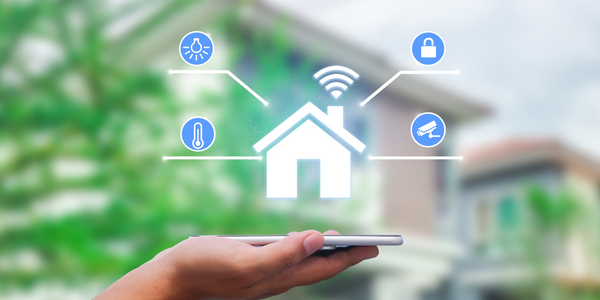Technology Category
- Robots - Autonomous Guided Vehicles (AGV)
- Sensors - Autonomous Driving Sensors
Applicable Industries
- Buildings
- Finance & Insurance
Use Cases
- Structural Health Monitoring
- Usage-Based Insurance
About The Customer
The customers in this case are the policyholders of insurance companies. They are individuals or entities that have taken out insurance policies to protect their properties, such as homes and vehicles. These customers are often reactive, only interacting with their insurance companies when they need to make a claim due to property damage. They are concerned about the safety of their properties, especially during damaging weather events. They value proactive communication from their insurance companies, especially alerts that can help them take preventative measures to avoid property damage. In fact, 90% of customers surveyed found value in weather alerts from their insurance companies.
The Challenge
Insurance companies often face the challenge of dealing with a high number of claims, especially during damaging weather events. These claims can cost millions of dollars and can negatively impact the customer experience. Customers usually interact with their insurance companies only during the claims process when their property has been damaged. This reactive approach to customer service can lead to dissatisfaction and a lack of engagement. Furthermore, insurance companies are particularly concerned about weather events that cause property damage, such as hurricanes, floods, and windstorms. These events can lead to a surge in claims, putting a strain on resources and potentially impacting the company's bottom line.
The Solution
The solution lies in the use of proactive weather alerts powered by weather intelligence technology. This technology allows insurance companies to monitor specific locations where their customers live and send alerts directly to policyholders if a potentially damaging weather event is imminent. These alerts can be sent through an app or via email and can advise policyholders to take preventative measures. For instance, in the event of an impending hailstorm, policyholders can be advised to move their cars indoors. Similarly, alerts can be sent out for high winds and wildfires, allowing customers to secure their property and create safe zones. This proactive approach not only prevents property damage but also enhances the customer experience. Additionally, weather intelligence can identify potential risks for policyholders, providing opportunities for upselling, such as offering increased coverage for customers living in high-risk areas.
Operational Impact
Quantitative Benefit

Case Study missing?
Start adding your own!
Register with your work email and create a new case study profile for your business.
Related Case Studies.

Case Study
Energy Saving & Power Monitoring System
Recently a university in Taiwan was experiencing dramatic power usage increases due to its growing number of campus buildings and students. Aiming to analyze their power consumption and increase their power efficiency across 52 buildings, the university wanted to build a power management system utilizing web-based hardware and software. With these goals in mind, they contacted Advantech to help them develop their system and provide them with the means to save energy in the years to come.

Case Study
Intelligent Building Automation System and Energy Saving Solution
One of the most difficult problems facing the world is conserving energy in buildings. However, it is not easy to have a cost-effective solution to reduce energy usage in a building. One solution for saving energy is to implement an intelligent building automation system (BAS) which can be controlled according to its schedule. In Indonesia a large university with a five floor building and 22 classrooms wanted to save the amount of energy being used.

Case Study
Powering Smart Home Automation solutions with IoT for Energy conservation
Many industry leaders that offer Smart Energy Management products & solutions face challenges including:How to build a scalable platform that can automatically scale-up to on-board ‘n’ number of Smart home devicesData security, solution availability, and reliability are the other critical factors to deal withHow to create a robust common IoT platform that handles any kind of smart devicesHow to enable data management capabilities that would help in intelligent decision-making

Case Study
Real-time In-vehicle Monitoring
The telematic solution provides this vital premium-adjusting information. The solution also helps detect and deter vehicle or trailer theft – as soon as a theft occurs, monitoring personnel can alert the appropriate authorities, providing an exact location.“With more and more insurance companies and major fleet operators interested in monitoring driver behaviour on the grounds of road safety, efficient logistics and costs, the market for this type of device and associated e-business services is growing rapidly within Italy and the rest of Europe,” says Franco.“The insurance companies are especially interested in the pay-per-use and pay-as-you-drive applications while other organisations employ the technology for road user charging.”“One million vehicles in Italy currently carry such devices and forecasts indicate that the European market will increase tenfold by 2014.However, for our technology to work effectively, we needed a highly reliable wireless data network to carry the information between the vehicles and monitoring stations.”

Case Study
Protecting a Stadium from Hazardous Materials Using IoT2cell's Mobility Platform
There was a need for higher security at the AT&T Stadium during the NFL draft. There was a need to ensure that nuclear radiation material was not smuggled inside the stadium. Hazmat materials could often be missed in a standard checkpoint when gaining entry into a stadium.








